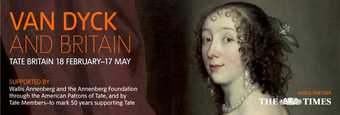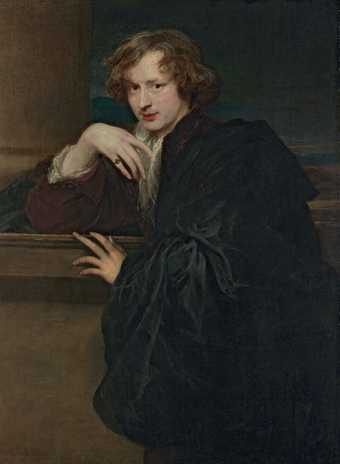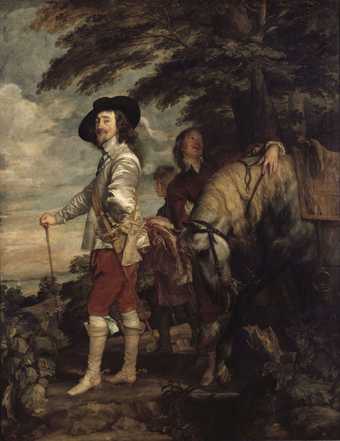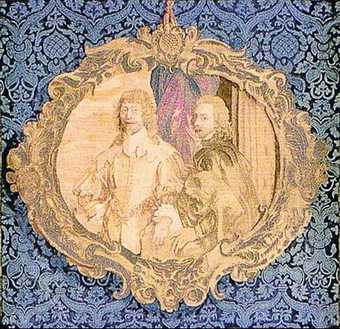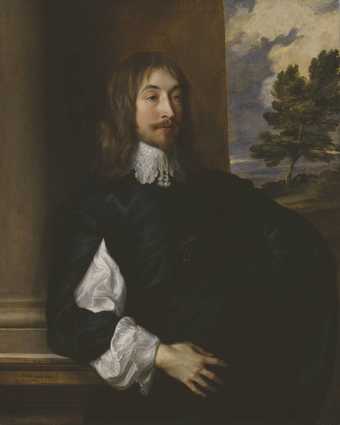In the valley of the River Nadder in Wiltshire, the cool and elegant chalk stream makes its way between the meadows, villages and downs on either side. Trout and grayling flicker in the shallows and bunches of meadowsweet flower on the banks. It is one of rural England’s most civilised landscapes. Just to the west of Salisbury, the river slides past the garden of Wilton House, the great Palladian palace of the earls of Pembroke. The house is the climax of the landscape, and the climax of the house is the huge saloon known in the seventeenth century as the ‘great Dining-roome, or Roome of State’, now called the ‘Double Cube’. It is 30ft wide, 30ft high and 60ft long – Palladian proportions, created here by Inigo Jones and his associates in the 1630s. The decoration is so rich that the harmonics nearly disappear beneath it. Carved swags, gilded encrustations and suspended pompoms hang from the walls. There is a vast fruitiness to it all; apples, peaches and pears drip from every surface. Nothing is held back.
On the west wall of this stupendous room is an enormous portrait of the family that owned and created it. Almost seventeen feet wide and eleven deep, Philip Herbert, 4th Earl of Pembroke, and his Family c.1635 is the largest painting ever made by van Dyck, a joint portrait of the 4th Earl of Pembroke and his children. Each of the ten figures it portrays is just larger than lifesize and they dominate, as they were meant to, the gilded space in front of them. The painting is full of grace and aristocratic poise, of riches at ease with themselves, of what now would be called privilege and was then considered nobility. It exudes a distant and forgotten handsomeness, an abandoned world of elegance and power, neither stiff nor louche, but regal and familial.
By the mid-1630s the Pembrokes had become one of the richest families in England. They owned tens of thousands of acres in Wiltshire and the West Country and tens of thousands more in Wales. They had surfed successive waves of royal favour from the 1540s onwards. They had a large palace on the Thames in London as well as some of the best apartments in Whitehall. The earl was Lord Chamberlain, the chief official of the royal household, as his brother had been before him, and the two of them had become England’s greatest Renaissance patrons: Philip Sidney, Walter Raleigh, Shakespeare, John Donne, George Herbert, Inigo Jones, the great garden designer Isaac de Caus and now van Dyck had all swum into the Pembroke orbit and benefited from it.
Look a little harder, though, and that atmosphere becomes more uncertain. Inside this painting’s grace are hints of anxiety and melancholy, of a world on the verge of collapse, of love thwarted and happiness denied, of ambivalence as the companion of glamour. Van Dyck was portraying a family at a particularly tender and vulnerable moment, one in which fragility and failure underlay all the more glimmering aspects of worldly success.
The portrait was painted in the late winter of 1634 or the spring of 1635. It is about a wedding. The earl’s oldest surviving son, fifteen-year-old Charles, Lord Herbert, in scarlet, was to marry a young heiress, the twelve or thirteen- year-old Mary Villiers, who was to bring to the marriage a dowry of £25,000, roughly equivalent to 2,000 years’ wages of a Wiltshire shepherd. She was the daughter of the Duke of Buckingham, the great parvenu of seventeenth-century England, who had risen to prominence and riches first on the back of James I’s lust (they first slept together in August 1615) and then as an invaluable guiding presence to his son Charles. The Pembrokes had loathed Buckingham and the marriage was one product of a treaty between the two families arranged by Charles, bringing together the old and new nobility, the ancient country-based Pembrokes and the new court-based Buckinghams, in what was intended as a single, unifying, mutually fertilising union.
But all is not well in this family and van Dyck’s design subtly mobilises the private and human dimensions of the grand, corporate event. He turns it, in effect, into a drama of fertility, time and death, much of whose meaning is carried by a ballet of the hands that is woven through the picture. On the far right stands the earl’s daughter, Anna Sophia, and her husband, Robert Dormer, Earl of Carnarvon, at this stage in his life a traveller and gambler, a notorious womaniser and rake, a man filled with the vigour of an active life. They are already the parents of a young heir, Charles, born two years before. They glow with sexuality and health: Anna Sophia’s bosom is deeply revealed and between her fingers she holds a single pearl, standing for the precious heir which she and her husband have conceived. Their hands dabble together in an unmistakably sexual way, the only sign of human contact in the painting. Theirs is the realm of fecundity and fullness. But still their eyes do not meet. No member of the family, in fact, looks at any other.
Next to that fertile and engaging pair is its opposite, the Earl of Pembroke and his countess, Lady Anne Clifford. Her hands are folded together in a way that is repeated nowhere else in the entire body of van Dyck’s work: an explicit gesture of enclosure and melancholy, shut off from those around her. She is the tragic failure at the heart of the picture. She is not the mother of the children arrayed around her. Pembroke’s first wife had died five years earlier and her own marriage to the earl had collapsed. She had given birth to two sons, both dead. The earl had rejected her and virtually confined her in a subsidiary Pembroke house at Ramsbury in Wiltshire. Both of them are painted shadowed and pushed back within the scene. Her averted eyes and folded hands are the gestures of a woman who is no longer ‘mingleinge anie part of [her] streames’ with this family, as she wrote in her own memoir. She is central but absent, her relationship with everyone around her cut away and inarticulate.
Beside her, but nowhere touching her, the earl holds the white staff of his office of Lord Chamberlain easily in the relaxed and lengthened fingers of his left hand. With his other hand, he reaches forward to the virginal promise of Mary Villiers, gesturing openly and generously towards the heart of the young woman who is to marry his son. These are the signs of power. She, however, holds a closed hand to her womb, a self-preservation even as she is to be married. In the picture space she is nearly but not quite connected to Charles, Lord Herbert, in red, who holds his left arm out as if in love, an openness to the world, but the hand itself is reflexed and withdrawn, perhaps also a sign of his virginity. Part of the marriage contract specified that they would not sleep together for four years.
These three pairs make a diagrammatic set: the Carnarvons’ fertility achieved, the Pembrokes’ barrenness accepted, the young Herberts’ breeding promised. The younger brother Philip, sharing with his brother the reddish-brown hair which had come down though the generations, hangs back on the edge of the group of six, not part of it and not quite distinct. It may be that in his portrayal there is some reflection of the story told by George Garrard, a court gossip, that Mary Villiers had fallen in love not with Charles the older brother, but with Philip, and that love had been denied because the corporate merger of the two families could not allow it. And there may be an element, in Mary Villiers’s own look of disdain, of a discontent with this marriage which was forced upon her for dynastic reasons. The final elements are the two sets of three children on the left. The three young Herbert boys on the ground are gloriously alive with their hounds and their books. The three young Herberts who died as children are shown here above them as angels, throwing roses into the wedding party.
The painting as a whole flickers between content and discontent, between a celebration of the beauty of existence and a recognition of its sorrows and travails. It is a form of sermon on mutability, time, beauty, inheritance and grief. There is nothing cruel in it, nor even unkind, but it is full of hesitation and even surprise, a tentativeness which makes complacency impossible. Where are they? Not in a comfortable interior, but half inside and half out, half in a theatre, half in the margins of a palace. Once you notice this sense of insecurity in the picture, it seems pervasive. There is no ease in Philip’s pose. It is uncertain, his face unsure. A little less edgily, his elder brother stands beside him, performing it appears to nothing but the air. Only the three young boys at the left-hand side, framed by their dogs, a greyhound and a setter, are immune to this atmosphere.
Van Dyck had a famous and treasured ability to give a scene the sense that it was a caught moment, to imply from his nearly mobile figures that within a second their perfect arrangement would change and collapse. It is a stilled dance. Transience was at the centre of his art and here it is set against its opposite. Behind the figures, two enormous certainties preside: the landscape of perfection on the left, receding into deep-shadowed calm, and in the centre-right, the vast coat of arms on the cloth which hangs behind them all, the inheritance of nobility, an assertion of the permanence from which they come. But do those certainties transmit themselves to the anxious figures in the foreground? Or do they serve to throw those figures into question? How do the two glorious young men really compare with the solidity and fixity of the two fluted columns behind them? They seem momentary beings by comparison, balanced on the balls of their feet, no more lasting or substantial than the clouds or the putti or the fading of the sunset.
Look beneath the surface of this painting and you see in it not a story of worldly glory, but of transience and fragility, of failure and disconnection, of the place of death and the erosion of time even in the most perfect circumstances. Within a year of its being painted, Charles, Lord Herbert, had died of smallpox in Florence. His widowed bride married the future Duke of Lennox and Richmond, another of the Pembrokes’ long-standing enemies. The Pembrokes’ own marriage never recovered and the family was riven in the civil war. The beautiful royalist Earl of Carnarvon was run though by a trooper at the first battle of Newbury. The earl, loathed by the Queen, was dismissed as Lord Chamberlain, turned Parliamentarian and ended his life as an MP stripped of his titles, ridiculed and despised by friends and enemies alike. The world van Dyck had painted was preserved only on canvas.

